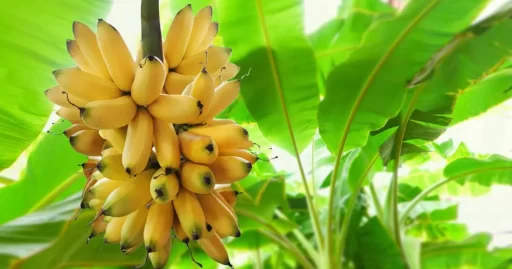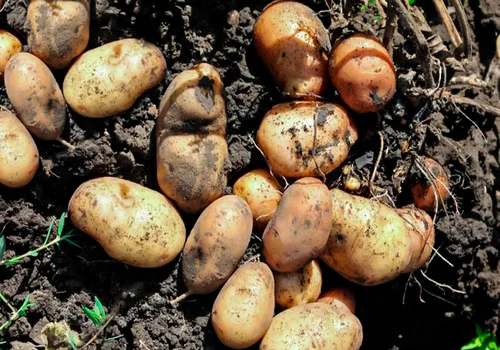Growing banana plants might seem like a tropical luxury, but with the right knowledge and care, they can thrive even in colder climates. In fact, banana plants, particularly certain cold-hardy varieties, can survive and grow in areas that experience frost and freezing temperatures. This article will guide you through four essential tips to help you grow the most beautiful banana plants in your backyard, even if you don’t live in a tropical zone.
Misconceptions About Banana Plants
One common misconception is that you need to live in a tropical climate to grow banana plants. While tropical regions certainly provide the ideal environment, bananas can still thrive in cooler areas with proper care. For instance, in zone 8a (Wilmington, North Carolina), banana plants can be grown and even bear fruit with the right protection during winter. However, mild winters are crucial if you’re looking to grow bananas for fruit. Ornamental bananas, on the other hand, can survive even colder climates, such as zone 5a.

A variety like Musa Basjoo can tolerate temperatures as low as -20°F (-29°C). In cold climates, these plants will die back to the ground in winter but will regrow in spring, often reaching heights of 15 feet in a single season. If you’re growing banana plants purely for their tropical appearance, you don’t need to worry as much about the cold, especially if you’re planting hardier varieties.
Selecting the Right Banana Varieties
The varieties you choose play a significant role in your banana plant’s success. Full-sized banana trees can grow as tall as 20 feet in tropical climates, but in regions with frost, they may die back during winter and regrow in the summer. For easier management, especially in cooler climates, dwarf varieties are recommended. These plants typically grow to about 10-15 feet tall, making them more manageable for protection against cold weather.
One popular variety for colder climates is Dwarf Orinoco. This variety is small but can bear fruit even in areas with seasonal frosts. Other varieties worth considering include Dwarf Brazilian and Vente Cohol. These varieties are ideal for shorter growing seasons and can still produce fruits with proper care.
Four Tips for Growing Beautiful Banana Plants
Banana Growing Tip #1: Regular Feeding
Banana plants are heavy feeders, requiring a lot of nutrients to grow quickly. One of the best practices for keeping your banana plants healthy is to “feed” them by returning organic matter back into the soil. This can be achieved by chopping up and returning the stems and leaves of the banana plant to the ground.
Banana plants are not true trees; they grow from underground corms that produce herbaceous pseudostems. Each pseudostem will eventually die back, either due to frost or natural life cycles, and must be cut down and chopped up. These pseudostems contain valuable nutrients that your banana plant can reabsorb when they decompose. By chopping them into smaller pieces, you’ll accelerate the decomposition process and provide essential nutrients to the plant.
Banana Growing Tip #2: Mulch and Compost
Maintaining a thick layer of mulch and compost around the base of your banana plants is vital for their health and growth. This layer mimics the natural jungle environment, where banana plants grow among rich organic matter. A thick layer of straw, leaves, and compost not only feeds the plant but also helps retain moisture and insulate the plant’s roots during colder months.
Bananas naturally grow in rainforests, where they benefit from a constant supply of falling organic matter. You can recreate this by adding straw, compost, and the chopped remains of banana plants around the base. This mulch layer also serves as insulation in cold climates, protecting the corm from frost damage.
Banana Growing Tip #3: Nitrogen Boost with Urine or Blood Meal
Banana plants thrive on nitrogen, which is why feeding them with human urine or blood meal is highly effective. Urine is an excellent source of nitrogen, which banana plants require for fast growth. If applying human urine isn’t practical or comfortable, consider using blood meal, an organic fertilizer high in nitrogen.
Blood meal is readily available and can be mixed into the soil around the base of your banana plants. Either option will provide the nitrogen necessary for optimal growth, especially during the active growing season.
Banana Growing Tip #4: Potash Fertilizer
In addition to nitrogen, banana plants require potash for vigorous growth and fruit production. Synthesized potash crystals, particularly those with a 0-0-60 ratio, are an excellent choice for banana plants. This high-potash fertilizer accelerates growth and enhances the chances of your banana plants producing fruit in climates with shorter growing seasons.
For best results, mix the potash fertilizer with water and apply it every four to six weeks during the growing season. This will encourage healthy root development and support fruiting.
Banana Varieties for Shorter Growing Seasons
For those living in colder climates, the best banana variety to grow for fruit is Dwarf Orinoco. It has consistently produced fruit in zone 8a for three years. Other promising varieties include Dwarf Brazilian and Vente Cohol, though they may take longer to fruit. If you are focused on ornamental growth, cold-hardy varieties like Musa Basjoo and Mekong Giant are excellent options.
Conclusion
Growing beautiful banana plants in colder climates is entirely possible with the right care and attention. By selecting the appropriate varieties, providing regular feeding, maintaining mulch and compost layers, and using nitrogen-rich and potash fertilizers, you can achieve vibrant, tropical-looking banana plants in your backyard. These four tips will help ensure that your banana plants grow tall and healthy, even in zones that experience frost.
Frequently Asked Questions
- Can banana plants grow in cold climates? Yes, cold-hardy varieties like Musa Basjoo can grow in climates as cold as zone 5a, but they may die back in winter and regrow in spring.
- What is the best fertilizer for banana plants? Banana plants thrive on nitrogen-rich fertilizers like urine or blood meal, as well as potash-rich fertilizers such as those with a 0-0-60 NPK ratio.
- How tall can banana plants grow? Full-sized banana plants can grow up to 20 feet in tropical climates, while dwarf varieties typically reach 10-15 feet.
- Do banana plants need to be protected from frost? Yes, banana plants need protection in areas with frost. Mulching around the base helps insulate the plant’s corm during cold months.
- What is the lifespan of a banana pseudostem? A banana pseudostem will die back after producing fruit or due to frost, and new pseudostems will grow from the corm.
- How often should I fertilize my banana plants? Fertilize banana plants every four to six weeks during the growing season with nitrogen-rich and potash-rich fertilizers.
- Can banana plants produce fruit in cooler climates? Yes, with proper care and protection, banana plants like Dwarf Orinoco can produce fruit in cooler climates, such as zone 8a.






